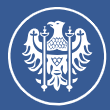Introduction
The University of Wrocław is Poland's top public research university and one of the oldest universities in Central Europe. It is located in Wroclaw, the fourth largest city in Poland and the capital of Lower Silesia Province. It has cultivated There are nine Nobel Prize winners, and its alumni have made remarkable achievements in political, academic, cultural and other fields in Poland and Europe.
Overview
Number of students and staff: More than 23,000 students and 3,569 administrative staff, with more than 100,000 graduates since 1945, including about 1,900 researchers.
Major settings: The school has 10 colleges, offering 44 study areas, covering liberal arts, science, engineering, law, medicine, economics, management and other disciplines, such as computer science, mathematics, chemistry, theoretical physics, experimental physics , managerial economics, tourism, economics, international relations, geography and environmental management, English linguistics, biotechnology, political science and other majors.
History and establishment time
It can be traced back to 1505, when King Wladyslaw II of Bohemian Hungary named it "Generale litterarum Gymnasium", but it was rejected by Pope Julius II for political reasons.
On October 1, 1702, it was officially named Friedrich Wilhelm Breslau University by Holy Roman Emperor Leopold I. It initially had Roman Catholic departments of theology, philosophy, law, medicine and classics. and five academic institutions, whose predecessor facilities have been in operation since 1638.
On August 3, 1811, the Catholic University of Frankfurt-Oder in Frankfurt, Germany merged with the school.
In 1945, due to territorial changes after World War II, the original University of Breslau in Germany closed and was transformed into the Polish National University, which officially opened on June 9, 1946.
School running strength
Faculty: We have a high-quality faculty, including many experts and scholars with profound attainments and rich teaching experience in their respective fields. They provide students with high-quality teaching and guidance, and also contribute to the scientific research development of the school. important contribution.
Scientific research achievements: Since the beginning of the 20th century, the school has trained 9 Nobel Prize winners, achieved remarkable scientific research results in multiple disciplines, and made important contributions to promoting scientific progress, such as in physics, chemistry, and biology. He has made outstanding research achievements in basic subjects such as science and applied subjects such as computer science and economics.
International cooperation: As a university with a high degree of internationalization, it has established extensive cooperative relationships with many universities and scientific research institutions around the world, and has carried out various forms of international exchange projects such as student exchanges, teacher visits, and cooperative research. It provides students and teachers with a broad international exchange platform and enhances the school's international influence.
Nature of institution
Public universities.
educational philosophy
Focus on cultivating students' comprehensive literacy, innovative ability and practical ability, emphasizing the combination of theoretical knowledge and practical application, encouraging students to actively participate in scientific research projects and social practice activities, improving students' problem-solving ability and teamwork spirit, and preparing students for their future careers To lay a solid foundation for development and personal growth, we are committed to cultivating outstanding talents with an international vision and social responsibility to adapt to the development needs of the global era.
Key laboratories and disciplines
Key laboratories: The school has many advanced laboratories and research centers, such as the observatory, botanical garden, natural history museum, chemistry laboratory, physiological plant laboratory, mineralogy institute, anatomy institute, etc., which provide scientific research work for the school. Provided important support.
Key disciplines: Physics, mathematics, chemistry, biology, computer science, law, economics and other disciplines have high academic status and influence in Poland and even internationally. Among them, the field of physics has trained the founder of quantum mechanics, Max・Outstanding talents such as Born and Schrödinger.
Faculty
The school has the following 10 colleges:
School of Chinese Language and Literature
School of History and Education
School of Law, Administration and Economics
School of Physics and Astronomy
School of Biotechnology
School of Biology
School of Geography, Geology and Environment
Academy of Social Sciences
School of Chemistry
School of Mathematics and Computer Science
Ranking
Ranked 4th in the national university rankings of the Global University Network (4ICU).
cost
Tuition fees vary by major and degree level. Tuition fees for undergraduate and master's programs are approximately 2,000-3,000 euros per year. The specific fees are subject to the official website of the school.
campus
Location: Located in the city of Wroclaw on the Oder River in southwestern Poland, the city is one of the oldest cities in Poland and one of the economic, cultural and transportation centers of Poland. It has rich historical and cultural heritage and Unique urban landscape.
Campus facilities: The campus has various architectural styles, integrating Prussian, Austrian and even Bohemian styles. The school has modern teaching facilities and scientific research equipment, such as libraries, laboratories, computer centers, etc., which provide good conditions for students' study and research.
-
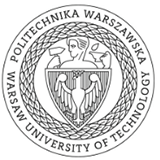
Warsaw University of Technology
-

Poznan University of Life Sciences
-
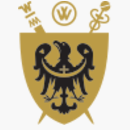
Wroclaw Medical University
-

Nicolaus Copernicus University
-
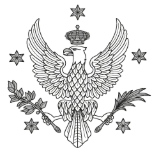
University of Warsaw
-

AGH University of Science and Technology
-

Silesian University of Technology
-
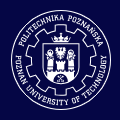
Poznan University of Technology
-

Jagiellonian University
-
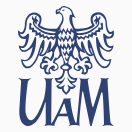
Adam Mickiewicz University
-

Mesoamerican University
-

Istmo University
-

Mariano Galvez University of Guatemala
-

Regional University of Guatemala
-

Galileo University
-

Francisco Marroquín University
-

Rafael Landívar University
-

University of the Valley of Guatemala
-

University of San Carlos of Guatemala
-

Technological Institute of Tlaxcala Plateau
-

Golfo University
-

Technological University of South Sonora
-

Technological University of Huejotzingo
-

Tizimín Institute of Technology
-

Chilpancingo Institute of Technology

